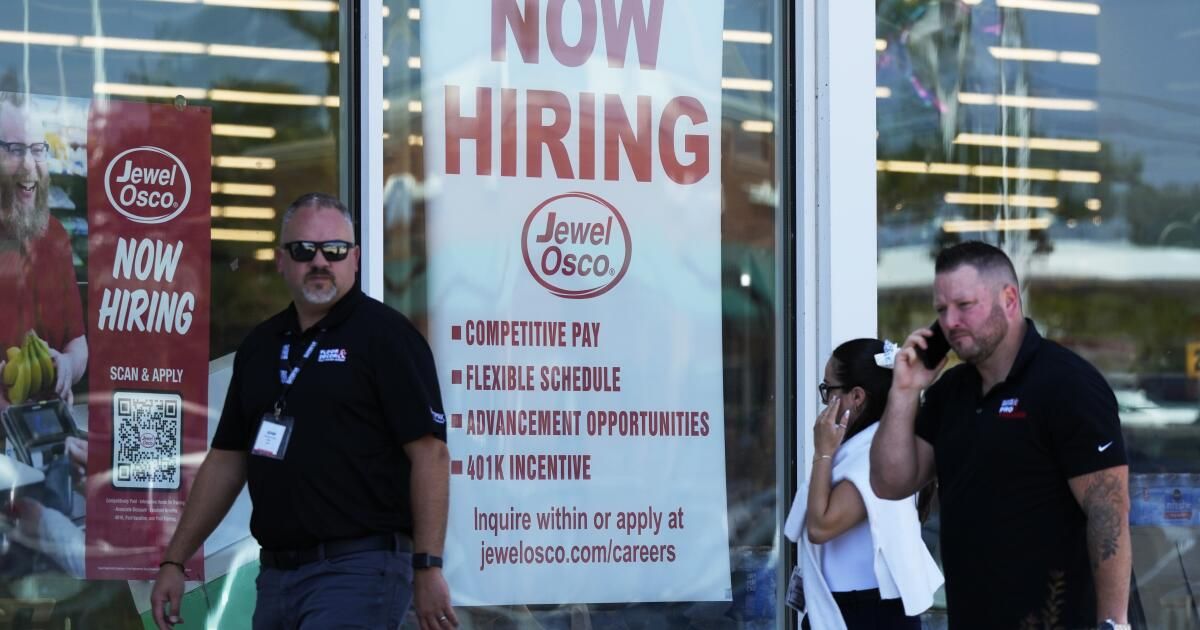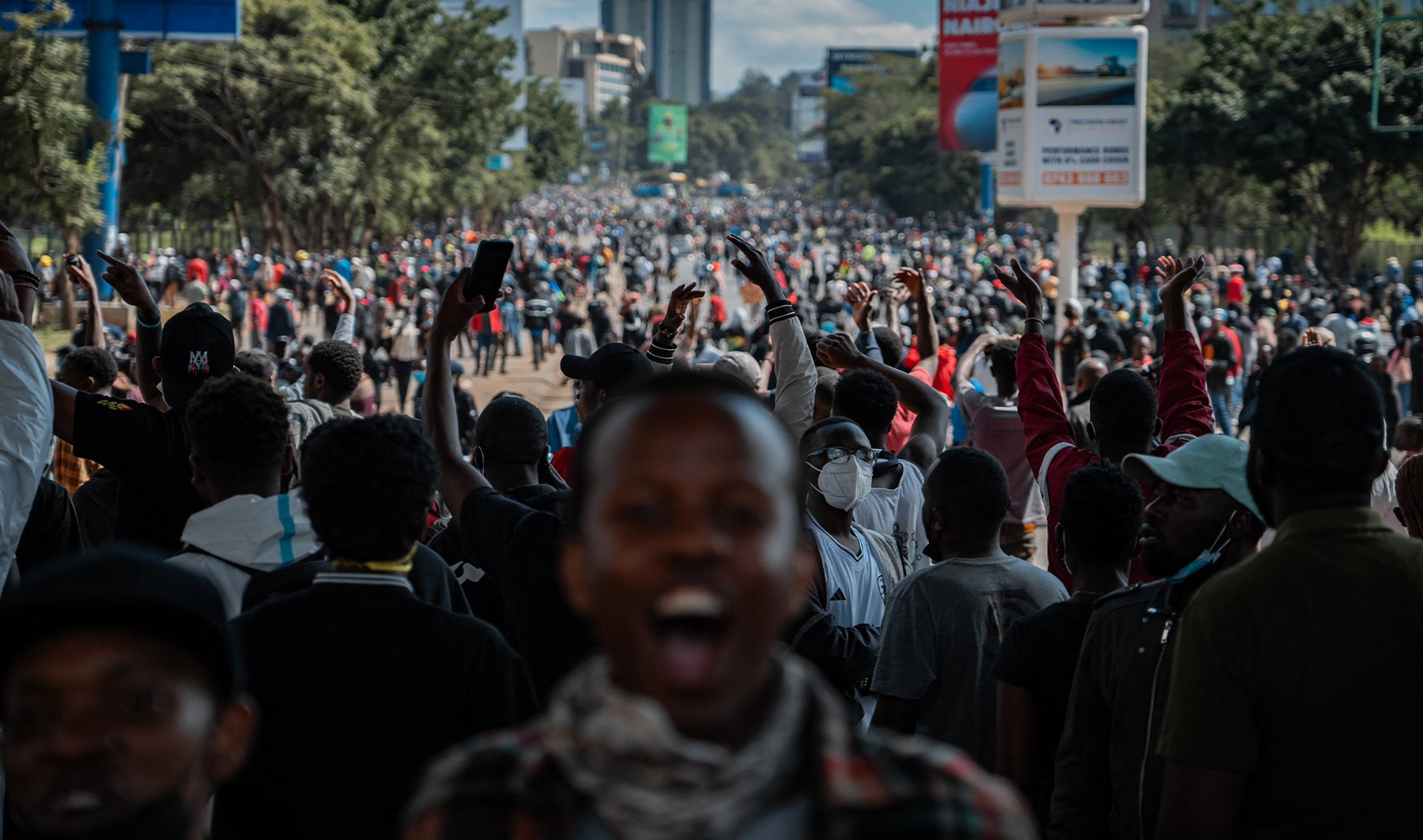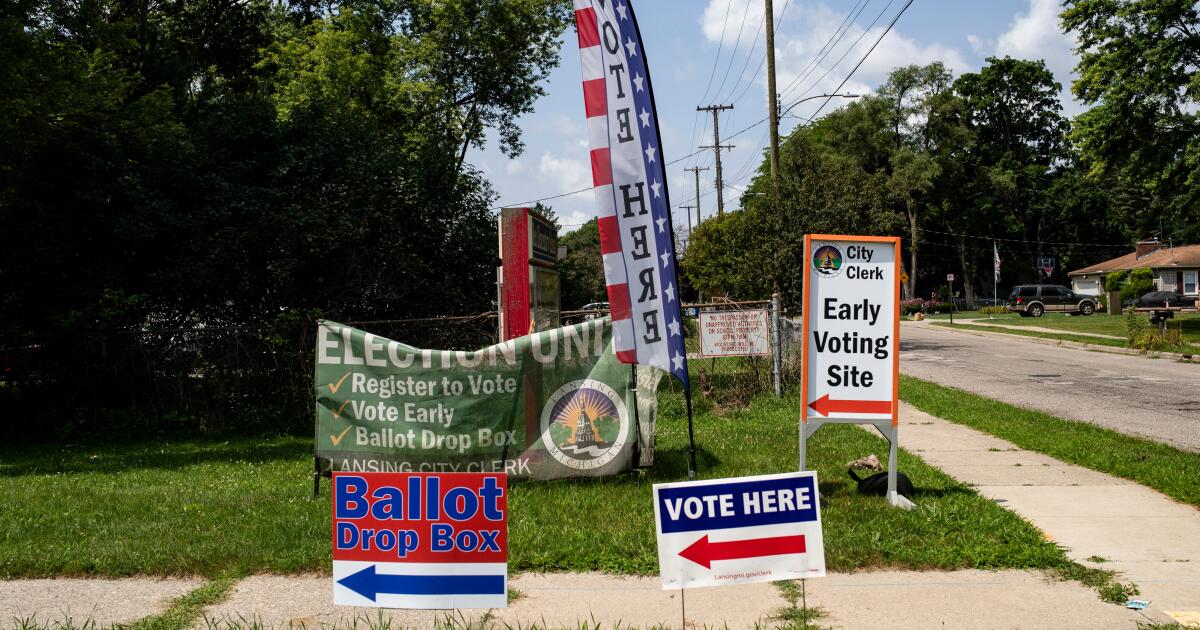An unexpectedly large increase in job creation last month, along with a drop in unemployment, was good news for the economy, for the Federal Reserve and for Democratic politicians because it suggested that authorities have so far succeeded in curbing inflation without triggering a recession.
The addition of 254,000 jobs in September, reported by the government on Friday, was well above the average of 203,000 monthly earnings over the past year. It beat analysts' expectations and indicated the economy is stronger than previously thought, despite a worrying slowdown in hiring over the summer.
At the same time, the unemployment rate fell to 4.1% from 4.2% in August.
Employers across a variety of industries increased their payrolls, led by food and beverage companies, health care and government. Payrolls in construction increased during the month, as did retail trade. However, jobs in manufacturing, transportation and warehousing declined slightly and there was little change in business services and information, which includes the struggling film industry.
“The report alone doesn't change the picture of the economic outlook, but it does provide reassurance that there is still plenty of life in the labor market,” said Jim Baird, chief investment officer at Plante Moran Financial Advisors, a major accounting firm. . company based in the Detroit area.
The strong hiring in September, plus a rebound in wage increases at a 4% annual pace (notably faster than the inflation rate), comes on the heels of the agency's large half-point reduction in interest rates. Federal Reserve last month cut the first rate since 2020. With inflation now appearing under control, the central bank is focusing on supporting the labor market.
After Friday's report, most analysts say they expect a quarter-point cut at the next Federal Reserve meeting in early November. Stocks initially rose on news of the latest jobs numbers, then fell and rose again on a volatile day on Wall Street.
The monthly employment report is considered the most important economic indicator. The October report will be released on November 1, a few days before the Federal Reserve meeting and the national election, in which the economy has been a top concern for voters.
September employment statistics for states will not be released until the end of the month. California's latest unemployment figure was 5.3% in August, the second highest in the country, although job growth in recent months has kept pace with the national rate.
At this late point in the political calendar, new economic reports are unlikely to sway many voters, who typically have already decided on their preferred candidate for the summer. Polls suggest that the persistent effects of inflation have cast a shadow over the economy in the minds of many voters, but the labor market has rarely been so resilient, and that goes for most of the key battleground states.
Arizona, Georgia, North Carolina and Pennsylvania had lower unemployment rates in August than the nation's 4.2% for that month, according to the U.S. Bureau of Labor Statistics. And its pace of job growth has been as strong, if not stronger, than the national average.
Wisconsin's unemployment rate was just 2.9% in August, and although Nevada has the highest unemployment in the country, at 5.5%, the state is creating jobs at twice the rate of the country. Meanwhile, Michigan's unemployment and job growth rates are slightly worse than the United States as a whole.
“If people look at the labor market, I think they would have to be pretty happy,” said Dean Baker, an economist at the Center for Economic and Policy Research in Washington who, like other analysts, was concerned about the unemployment rate. rose to 4.3% in July from 3.7% at the beginning of the year. But after Friday's report, he said, “This is a really low unemployment rate by historical standards, and most swing states are doing even better.”
Baker said the labor market has been boosted by federal spending and investments, as well as increased flows of immigrants who, while raising new controversies, have also filled many jobs.
The future may be a little cloudy, with the conflict in the Middle East and uncertainties over the November 5 elections. Additionally, October employment numbers could be affected by the devastating effects of Hurricane Helene and a strike by Boeing workers if that persists. , even as the suspension of large-scale dockworker picketing at East Coast and Gulf ports eliminated another potential hit to employment numbers.
Cory Stahle, an economist at Indeed Hiring Lab, said next month's report may not be as reassuring, as it reflects fluctuating month-to-month data. But “the labor market is not on the brink of collapse,” he said, although he added that Fed interest rate cuts may be necessary to maintain momentum.
“Another half-point interest rate cut in November is already out of the question; a quarter-point cut is likely,” said Sung Won Sohn, professor of economics and finance at Loyola Marymount University. “The central bank will proceed with a series of small interest rate cuts.”












